Ever pondered about the creatures that inhabited the Earth’s seas millions of years back? Life was quite different in those times. Without the existence of humans, there was no fear of being consumed by mammoth sea monsters. A significant portion of North America was submerged underwater, known as the Western Interior Seaway, teeming with ferocious marine reptiles. These marine animals were colossal, fearsome and equipped with lethal sharp teeth, yet there’s still an enormous amount we don’t comprehend about them. Interested in discovering what we have learnt? Here are 25 incredible sea monsters that reigned supreme in the oceans.
Pikaia
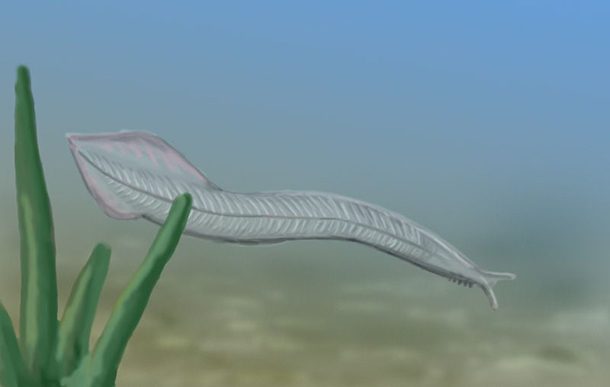 Source: http://paleobiology.si.edu/burgess/pikaia.html
Source: http://paleobiology.si.edu/burgess/pikaia.html While not exactly a “dinosaur,” Pikaia is one of the earliest creatures swimming around in the Burgess Shale community and has a direct link as one of humanities earliest ancestors.
Ichthyosaurs
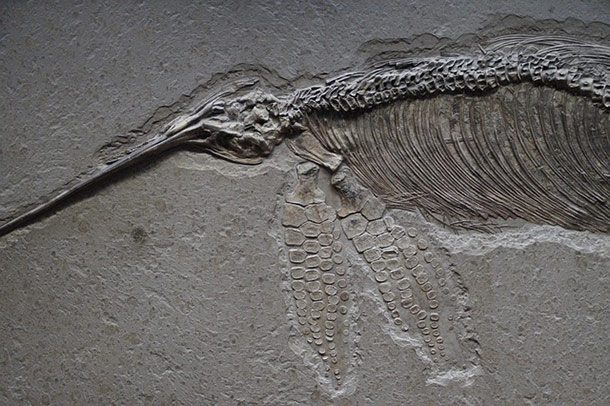 Source: http://www.ucmp.berkeley.edu/diapsids/ichthyosauria.html
Source: http://www.ucmp.berkeley.edu/diapsids/ichthyosauria.html Meaning “Fish Lizard,” Ichthyosaurs shared the sea with several large dinosaurs at the time. They originally swam like eels but advanced into looking and swimming like a modern day fish or dolphin. Like modern whales, they breathed air and lacked gills but could give birth in the water.
Shastasaurus
 Source: http://www.prehistoric-wildlife.com/species/s/shastasaurus.html; https://www.newdinosaurs.com/shastasaurus/
Source: http://www.prehistoric-wildlife.com/species/s/shastasaurus.html; https://www.newdinosaurs.com/shastasaurus/ Located in California, British Columbia, and China, the Shastasaurus was a massive sea creature, measuring up to 21 meters long. In fact, it’s considered to be the largest marine reptile to ever live. In spite of it’s size, Shastasaurus primarily lived off of small fish, cephalopods, and squids.
Pliosaur
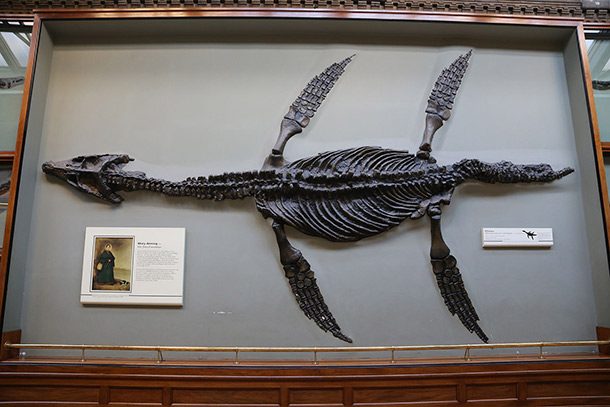 Source: http://www.bbc.co.uk/nature/life/Pliosaur
Source: http://www.bbc.co.uk/nature/life/Pliosaur Built for speed, the Pliosaur had a short neck and could swim up to 10 km/h. They hunted fish, cephalopods, and other marine reptiles but have been found to also have land dinosaur remains in their stomachs.
Thalassomedon
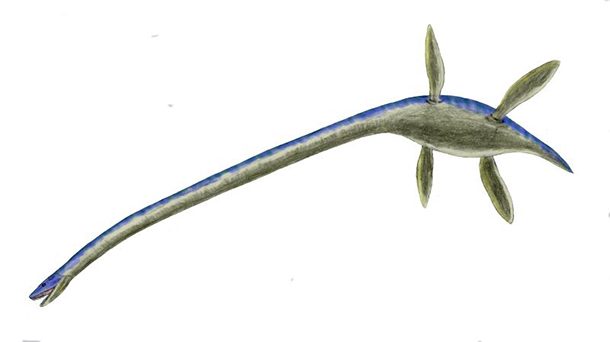 Source: http://www.prehistoric-wildlife.com/species/t/thalassomedon.html
Source: http://www.prehistoric-wildlife.com/species/t/thalassomedon.html Found in Colorado and Montanna, the Thalassomedon has a long neck and was only known in the Late Cretaceous due to other predators taking over.
Squalicorax
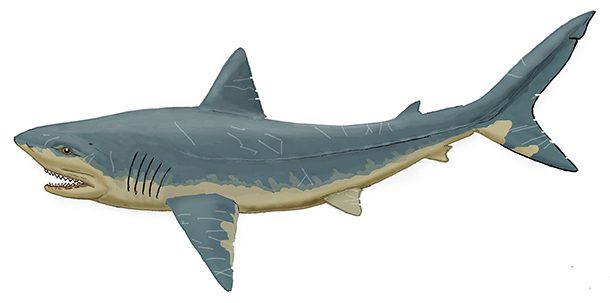 Source: http://www.prehistoric-wildlife.com/species/s/squalicorax.html
Source: http://www.prehistoric-wildlife.com/species/s/squalicorax.html Resembling a modern day Great White Shark, the squalicorax has been found in North America, Europe, and North Africa. Remarkably, it’s been discovered that the squalicorax ate dinosaurs. With teeth measuring up to 21 millimeters wide we’re sure this creature had no problems crunching through dinosaur bones.
Xiphactinus
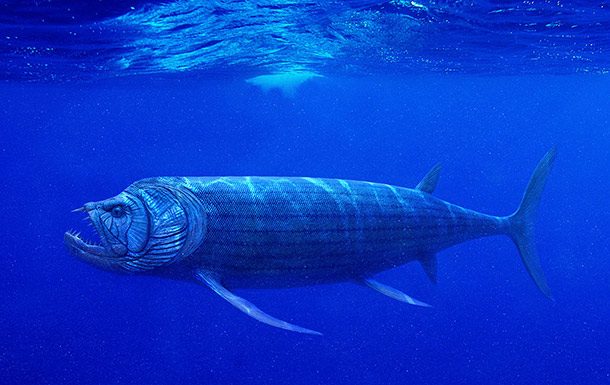 Source: http://www.nationalgeographic.com/animals/prehistoric/xiphactinus/
Source: http://www.nationalgeographic.com/animals/prehistoric/xiphactinus/ Xiphactinus is considered one of the fiercest and largest bony fish of the Late Cretaceous. At 13-feet-long it swam around the Western Interior Seaway and was capable of eating a 6-foot fish whole.
Dakosaurus
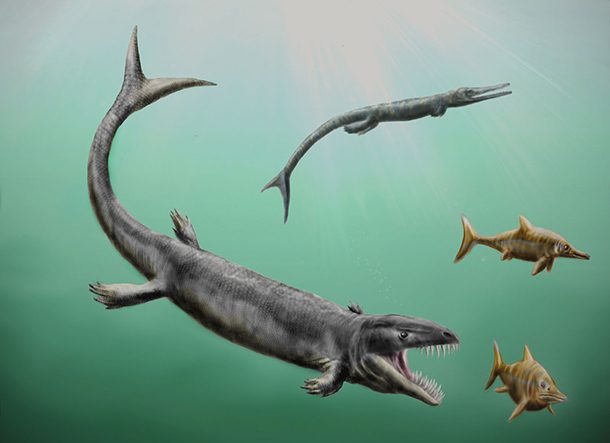 Source: http://www.prehistoric-wildlife.com/species/d/dakosaurus.html
Source: http://www.prehistoric-wildlife.com/species/d/dakosaurus.html Nicknamed “Godzilla” due to its skull shape, the Dakosaurus’s appearance to the famed beast stops there. It swam around in the sea and shared much of the same waters of modern-day crocodiles.
Elasmosaurus
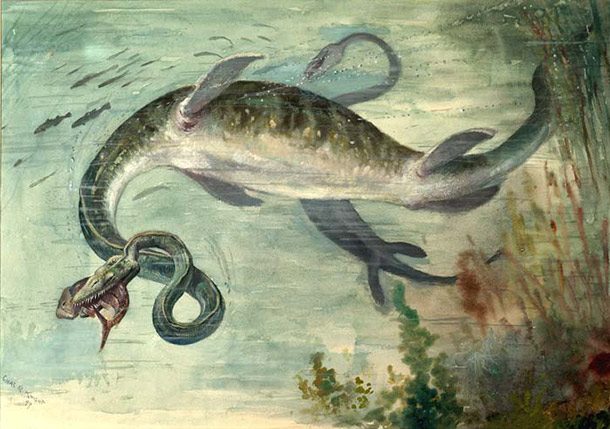 Source: http://www.prehistoric-wildlife.com/species/e/elasmosaurus.html
Source: http://www.prehistoric-wildlife.com/species/e/elasmosaurus.html One of the best-known plesiosaurs in the world, the Elasmosaurus is renowned for its incredibly long neck. While not a fast swimmer, it would use stalking tactics to prey on its food.
Tylosaurus
 Source: http://www.prehistoric-wildlife.com/species/t/tylosaurus.html
Source: http://www.prehistoric-wildlife.com/species/t/tylosaurus.html Found in the central United States and Canada, the Tylosaurus was about 15 meters long and was considered an apex predator of its time, killing and eating pretty much any species.
Megapiranha
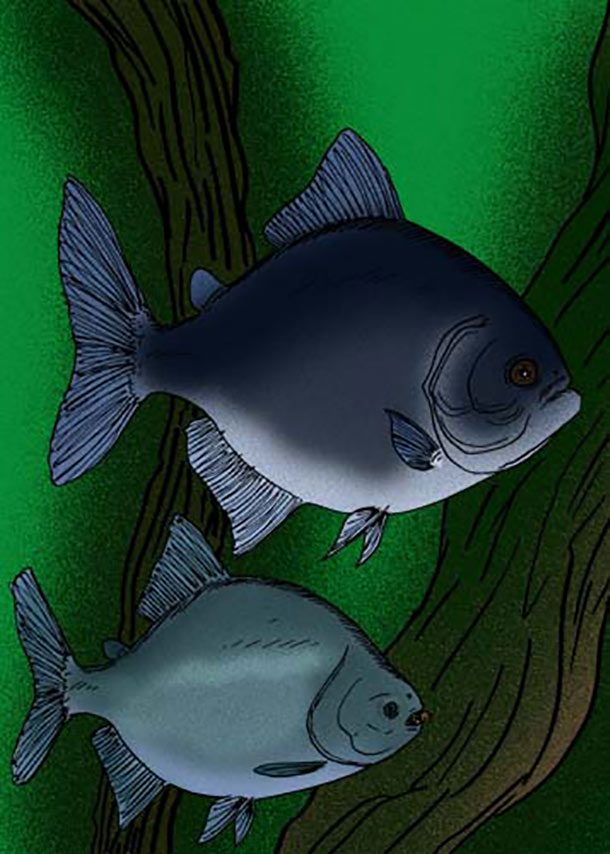 Source: http://www.prehistoric-wildlife.com/species/m/megapiranha.html
Source: http://www.prehistoric-wildlife.com/species/m/megapiranha.html Found in Argentina, Megapiranha is a much larger version of its modern-day predecessor, the piranha. Up to a meter long and half a meter tall, the Megapiranha was not a fish you’d want to meet in the wild.
Tiktaalik
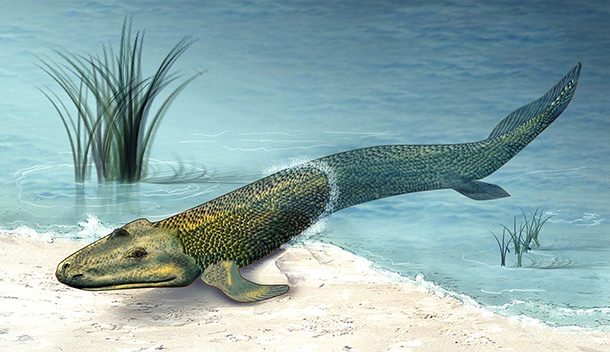 Source: http://evolution.berkeley.edu/evolibrary/news/060501_tiktaalik
Source: http://evolution.berkeley.edu/evolibrary/news/060501_tiktaalik The Tiktaalik is a bizarre mixture between a fish and a crocodile. Though it has fins and the body of a fish, its head matches a crocodile. Its fossil was found in 2005 in the Arctic. Many scientists believe its the evolutionary link between swimming fish and their descendants.
Nothosaurus
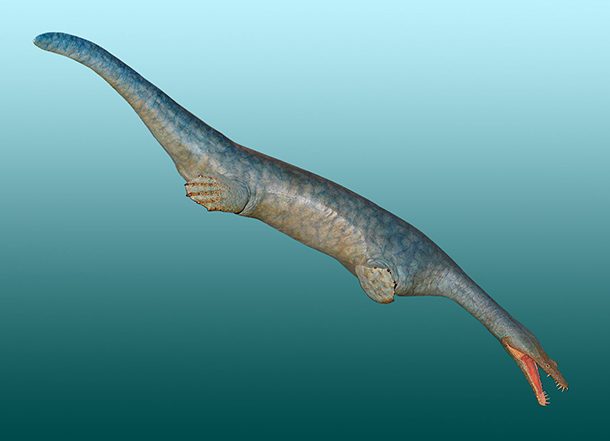 Source: http://dinopedia.wikia.com/wiki/Nothosaurus
Source: http://dinopedia.wikia.com/wiki/Nothosaurus The Nothosaurus has a long snout with tiny sharp teeth lining its mouth. It possibly lived a lifestyle similar to modern-day seals. But, unlike seals, the Nothosaurus lived in Europe and the Middle East.
Otodus
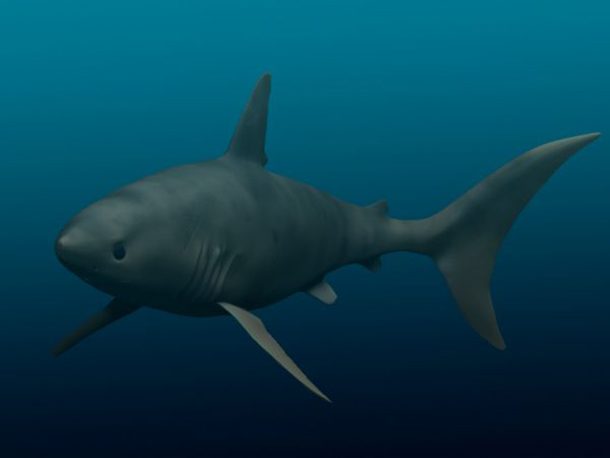 Source: http://www.prehistoric-wildlife.com/species/o/otodus.html
Source: http://www.prehistoric-wildlife.com/species/o/otodus.html While not even close to the largest shark of its time, the Otodus is definitely bigger than any shark living today. While not an apex predator, the Otodus could have easily held his own against other sea creatures.
Tanystropheus
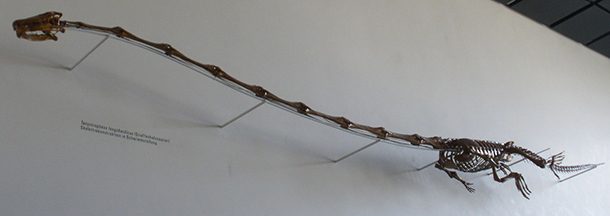 Source: http://www.prehistoric-wildlife.com/species/t/tanystropheus.html
Source: http://www.prehistoric-wildlife.com/species/t/tanystropheus.html While technically not dependent on the sea, the Tanystropheus was known to hunt its prey in the water. Its teeth are made to eat marine life. Some paleontologists believed its habitat was solely in the water but its legs seem more suited for walking rather than swimming.
Stethacanthus
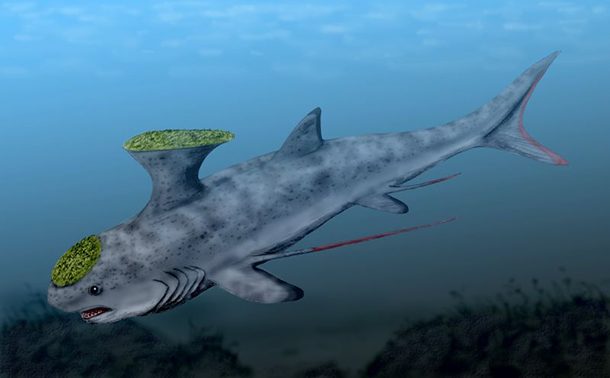 Source: https://www.thoughtco.com/history-of-stethacanthus-1093704
Source: https://www.thoughtco.com/history-of-stethacanthus-1093704 The Stethacanthus is a pre-historic shark with a unique protrusion on its back that looks like an ironing board. It was not a very fearsome shark and paleontologists believe it was a bottom feeder.
Bernissartia
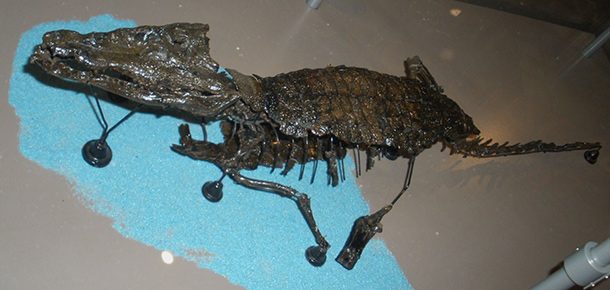 Source: https://www.thoughtco.com/overview-of-bernissartia-1093474
Source: https://www.thoughtco.com/overview-of-bernissartia-1093474 The Bernissartia dwelled in the swamps and shorelines of Europe and other than its small size, looks very similar to a modern crocodile. Despite being small, they frequently were found near much larger creatures.
Kronosaurus
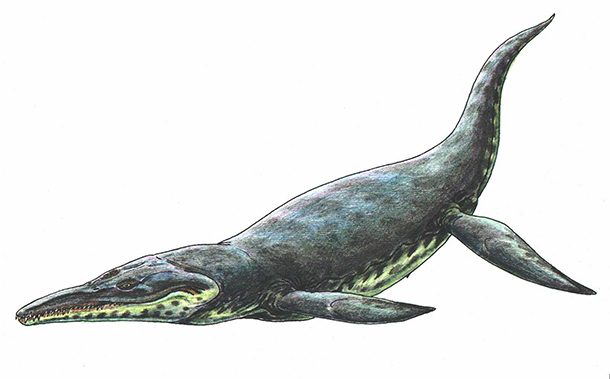 Source: https://www.newdinosaurs.com/kronosaurus/
Source: https://www.newdinosaurs.com/kronosaurus/ Living somewhere around 125 million years ago in the Early Cretaceous, the Kronosaurus lived in the ocean in what is now Australia. They were approximately 10 meters long and weighed around 10 tons, twice the size of a Narwhal.
Thalattoarchon Saurophagis
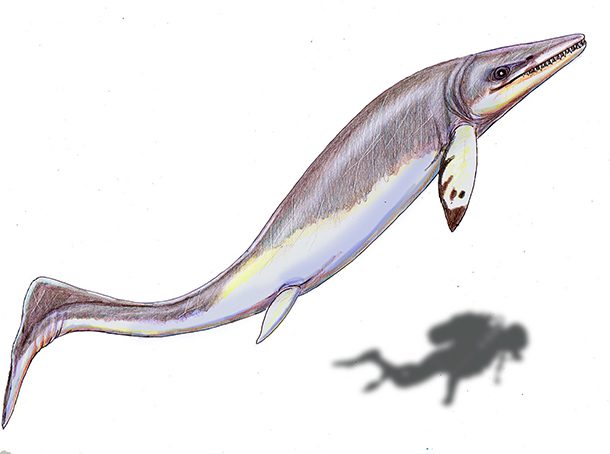 Source: http://phenomena.nationalgeographic.com/2013/01/07/sharp-toothed-thalattoarchon-was-the-first-ruler-of-the-triassic-seas/
Source: http://phenomena.nationalgeographic.com/2013/01/07/sharp-toothed-thalattoarchon-was-the-first-ruler-of-the-triassic-seas/ Called “The Lizard Eating Ruler of the Seas” by paleontologists, Thalattoarchon Saurophagis was a fierce underwater predator. It appeared around 5 million years after one of Earth’s mass extinction events and ruled the seas with its knife-edged teeth.
Shonisaurus
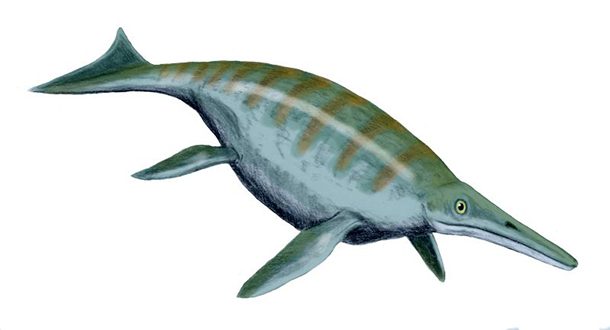 Source: http://www.prehistoric-wildlife.com/species/s/shonisaurus.html
Source: http://www.prehistoric-wildlife.com/species/s/shonisaurus.html A large and especially primitive marine creature, the Shonisaurus was found in Nevada and is a bit of a favorite among researchers. Due to its lack of teeth, scientists speculate it preferred soft-bodied animals for its food.
Mosasaurus
 Source: http://www.prehistoric-wildlife.com/species/m/mosasaurus.html
Source: http://www.prehistoric-wildlife.com/species/m/mosasaurus.html Finding the first skull in 1764 in the Netherlands, the Mosasaurus was the most heavily built of the Mosasaurs. They were mostly a carnivorous predator of the upper ocean and had little reason to dive deep.
Liopleurodon
 Source: https://www.newdinosaurs.com/liopleurodon/
Source: https://www.newdinosaurs.com/liopleurodon/ Living around 160 million years ago, the Liopleurodon was a massive and ferocious reptile, weighing 2.5 tons and measuring about 9 meters long. It’s directional sense of smell and razor-sharp teeth made it a horror of the seas.
Cymbospondylus
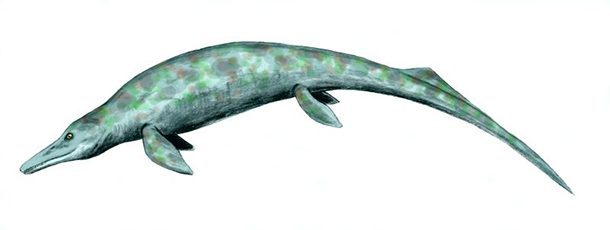 Source: http://www.bbc.co.uk/science/seamonsters/factfiles/cymbospondylus.shtml
Source: http://www.bbc.co.uk/science/seamonsters/factfiles/cymbospondylus.shtml With a tail long like an eel and no dorsal fin, the Cymbospondylus existed in the Late Triassic period. It was a dolphin-like swimmer with the capability of feasting on giant reptiles but preferred fish.
Deinosuchus
 Source: http://www.prehistoric-wildlife.com/species/d/deinosuchus.html
Source: http://www.prehistoric-wildlife.com/species/d/deinosuchus.html The Deinosuchus was a massive ancestor of the crocodile, measuring around 10 to 12 meters long. By studying teeth marks on other fossils, paleontologists have concluded the Deinosuchus killed and ate some of the most fearsome dinosaurs of its era, including the T-Rex.
Megalodon
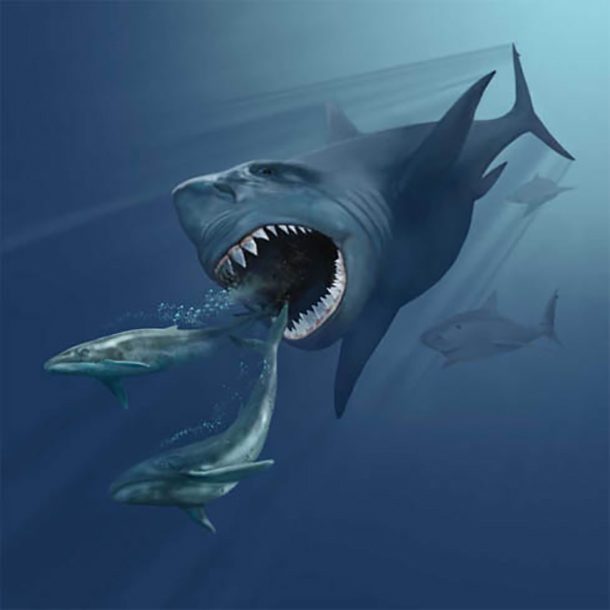 Source: https://www.fossilera.com/pages/megalodon
Source: https://www.fossilera.com/pages/megalodon The Megalodon was the largest and deadliest shark on the planet. Measuring at 20 meters long with teeth about 17 centimeters big, the Megalodon dwarfed pretty much every other sea creature known to man. Traced back nearly 60 years ago, it is not an ancestor of the Great White Shark but the end of an evolutionary line of the Otodus Shark.
Lists Going Viral Right Now
Photo: 25. Nobu Tamura (http://spinops.blogspot.com), Pikaia BW, CC BY 3.0, 24. Pixabay.com (Public Domain), 23. Nobu Tamura (http://spinops.blogspot.com), Shastasaurus BW, CC BY 3.0, 22. John Cummings, Pliosaur, Rhomaleosaurus camptoni, Natural History Museum, London, CC BY-SA 3.0, 21. Nobu Tamura (http://spinops.blogspot.com), Thalassomedon BW, CC BY-SA 3.0, 20. Creator:Dmitry Bogdanov, Squalicorax2DB, CC BY 3.0, 19. Julian Johnson, Xiphactinus CGI, CC BY-SA 2.0, 18. Durbed, Dakosaurus, Cricosaurus, and ichthyosaurs by durbed, CC BY-SA 3.0, 17. Wikipedia Commons.com (Public Domain), 16. Creator: Dmitry Bogdanov, Tylosaurus pembinensis 1DB, CC BY 3.0, 15. Apokryltaros, Megapiranha Colossoma, CC BY-SA 4.0, 14. Wikipedia Commons.com (Public Domain), 13. Model created by Adam Procházka, Baden-Baden, Germany for Staatliches Museum für Naturkunde Karlsruhe, Germany. Foto: H. Zell, Nothosaurus mirabilis 01, CC BY-SA 3.0, 12. Nobu Tamura (http://spinops.blogspot.com), Otodus obliquus, CC BY 3.0, 11. Ghedoghedo, Tanystropheus longobardicus 4, CC BY-SA 3.0, 10. Nobu Tamura (http://spinops.blogspot.com), Stethacanthus BW, CC BY 3.0, 9. Ghedoghedo, Bernissartia fagesii, CC BY-SA 3.0, 8. Wikipedia Commons.com (Public Domain), 7. DiBgd, Thalattoarchon DB15, CC BY-SA 4.0, 6. Nobu Tamura (http://spinops.blogspot.com), Shonisaurus BW 2, CC BY-SA 3.0, 5. Ghedoghedo, Mosasaurus beaugei skull, CC BY-SA 4.0, 4. Nobu Tamura (http://spinops.blogspot.com), Liopleurodon BW, CC BY-SA 3.0, 3. Nobu Tamura (http://spinops.blogspot.com), Cymbospondylus BW, CC BY-SA 3.0, 2. Wikipedia Commons.com (Public Domain), 1. Karen Carr, VMNH megalodon, CC BY 3.0



























